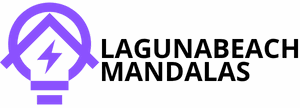Buying a home can feel like a rollercoaster ride, and navigating the mortgage maze is no picnic. Enter the lock-in mortgage rate, your trusty safety harness in this wild journey. Imagine securing that sweet interest rate before it does a disappearing act—like your favorite snack when you’re on a diet. Locking in a rate can save thousands over the life of your loan, making it a savvy move for any homebuyer.
But wait, there’s more! Lock-in rates not only provide peace of mind but also shield you from the unpredictable whims of the market. As rates fluctuate like a cat on a hot tin roof, locking in ensures that your monthly payments stay stable. So, if you’re ready to take the plunge into homeownership, understanding lock-in mortgage rates could be your golden ticket to financial bliss.
Table of Contents
ToggleWhat Is a Lock-In Mortgage Rate?
A lock-in mortgage rate refers to an agreement between a borrower and a lender that secures a specific interest rate for a defined period. This agreement acts as a safeguard against potential increases in interest rates while the borrower finalizes their mortgage application. Homebuyers often opt for this strategy when they’re ready to purchase.
Locking in a rate typically occurs during the mortgage application process. It can last from a few weeks to several months, depending on the lender’s policies. Borrowers benefit by knowing their interest rate will remain stable, even if market rates rise significantly during their buying process. This predictability makes it easier to budget monthly payments.
Mortgage lenders generally allow lock-in periods ranging from 15 to 60 days. Some lenders offer extended lock options, which can last up to 12 months. Such flexibility helps borrowers who may need additional time to secure a property without worrying about fluctuating rates.
Costs may be associated with a lock-in rate, often referred to as a lock-in fee, which varies by lender. It’s essential for borrowers to compare offers to find the most favorable terms. Overall, a lock-in mortgage rate provides peace of mind as it protects borrowers from unexpected economic changes while they engage in home purchases.
Benefits of Lock-In Mortgage Rate

Lock-in mortgage rates provide essential advantages for homebuyers. They create stability and safeguard against fluctuating market conditions.
Stability in Payments
Homebuyers appreciate the predictability of their monthly payments with a locked-in rate. Consistent payments simplify budgeting and financial planning. They also eliminate the uncertainty that arises with changing interest rates during the mortgage process. A fixed interest rate remains unchanged, which allows for easier management of household expenses. Additionally, long-term stability supports the borrower in making more informed lifestyle choices.
Protection Against Interest Rate Increases
Locking in a mortgage rate offers crucial protection from rising interest rates. Homebuyers often face varying market trends, and securing a rate helps avoid increased borrowing costs. If interest rates rise significantly during the loan approval process, borrowers who locked in will benefit from lower rates. This advantage can result in substantial savings over the life of the loan. Borrowers enjoy peace of mind knowing that their financial obligations won’t change even if the market fluctuates in the future.
How to Lock-In a Mortgage Rate
Locking in a mortgage rate involves a straightforward process. It requires understanding specific steps to effectively secure an interest rate before finalizing a home purchase.
Steps to Secure a Lock-In
- Choose a Lender: Select a lender with competitive rates and favorable terms for lock-ins.
- Complete the Application: Submit a mortgage application to initiate the process.
- Request the Lock-In: Inform the lender of the intention to lock in the rate during the application process.
- Review Terms: Evaluate the lock-in duration and associated costs, if any.
- Confirm the Lock: Finalize the lock-in with the lender, ensuring a clear understanding of the agreement.
Timing Considerations
Understanding timing plays a crucial role in securing a lock-in. Many lenders recommend locking in a rate once the application is submitted. Locking in early offers protection against rising rates. Homebuyers should also be aware that market conditions fluctuate, so timing can impact costs. An extended lock option may suit buyers anticipating longer closing periods. Staying informed about interest rate trends can optimize the timing of the lock-in, ensuring the best possible rate.
Potential Drawbacks of Lock-In Mortgage Rate
Homebuyers should consider the potential drawbacks of locking in a mortgage rate. While this strategy offers protection against rising interest rates, it comes with limitations.
Limited Flexibility
Locking in a mortgage rate can restrict a borrower’s options. If interest rates decline after securing a lock, the borrower cannot take advantage of lower rates. Lenders typically don’t allow borrowers to switch to a more favorable rate without incurring fees. Additionally, borrowers may feel trapped if their financial situation changes, as they may miss opportunities to renegotiate. This inflexibility can lead to higher long-term costs than anticipated.
Impact of Market Changes
Market fluctuations can complicate the benefits of a locked rate. While a lock protects against rising rates, it fails to offer any advantage if rates drop significantly. Borrowers might not only miss lower rates but also face the consequences of persistent higher payments. Adapting to sudden market shifts can be challenging for locked borrowers when they face unexpected changes in their financial landscape. Understanding these risks helps homebuyers make informed decisions during the mortgage process.
Locking in a mortgage rate is a strategic move that offers homebuyers crucial advantages in a fluctuating market. By securing a fixed interest rate, borrowers can enjoy predictable monthly payments and safeguard their financial future. This stability not only aids in budgeting but also provides peace of mind during the homebuying journey.
While there are potential drawbacks to consider such as the risk of missing out on lower rates, the benefits of locking in a rate often outweigh the downsides. Homebuyers should weigh their options carefully and stay informed about market trends to make the best decision for their unique situations. Ultimately, a lock-in mortgage rate can be a valuable tool for anyone looking to navigate the complexities of homeownership effectively.




